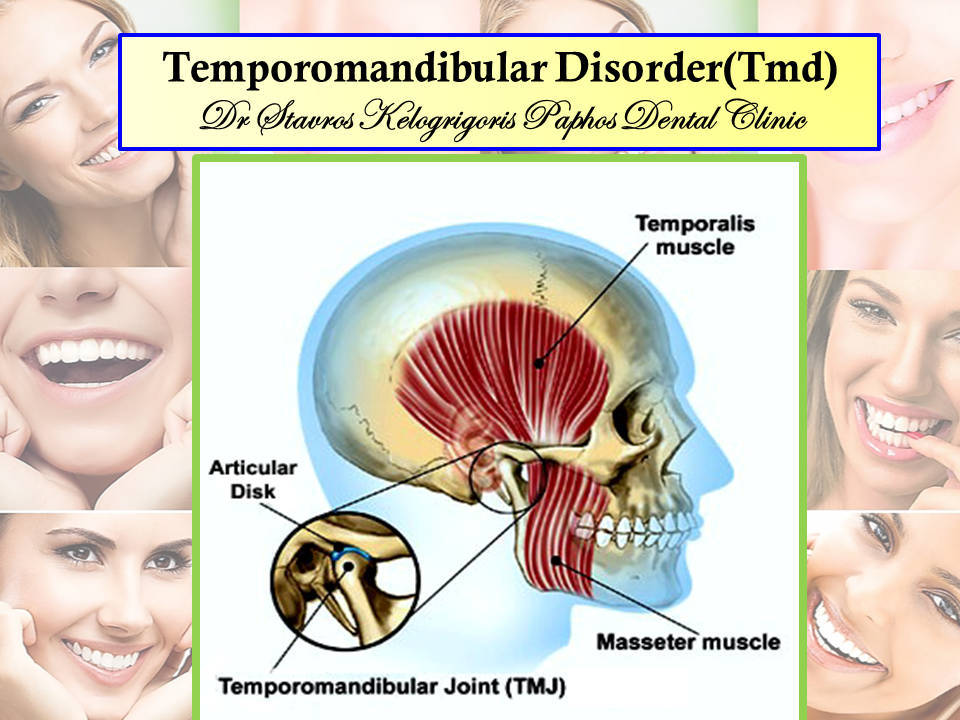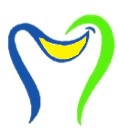Temporomandibular Disorder(TMD)
What are Temboromandibular and Muscle Disorders?
Temporomandibular Joint (TMJ) and muscle disorders (TMJ disorders) are problems or symptoms of the chewing muscles and joints that connect your lower jaw to your skull.
There are two matching temporomandibular joints -- one on each side of your head, located just in front of your ears.
 |
What are the causes for Temboromandibular Disorders?
Many TMJ-related symptoms are caused by the effects of physical stress on the structures around the joint. These structures include:
 Cartilage disk at the joint.
Cartilage disk at the joint. Muscles of the jaw, face, and neck.
Muscles of the jaw, face, and neck. Nearby ligaments, blood vessels, and nerves.
Nearby ligaments, blood vessels, and nerves. Teeth.
Teeth.
For many people with temporomandibular joint disorders, the cause is unknown. Some causes given for this condition are not well proven. These included:
 A bad bite or orthodontic braces.
A bad bite or orthodontic braces. Stress and tooth grinding. Many people with TMJ problems do not grind their teeth, and many who have been grinding their teeth for a long time do not have problems with their TMJ joint. For some people, the stress associated with this disorder may be caused by the pain as opposed to being the cause of the problem.
Stress and tooth grinding. Many people with TMJ problems do not grind their teeth, and many who have been grinding their teeth for a long time do not have problems with their TMJ joint. For some people, the stress associated with this disorder may be caused by the pain as opposed to being the cause of the problem. Poor posture can also be an important factor in TMJ symptoms. For example, holding the head forward while
Poor posture can also be an important factor in TMJ symptoms. For example, holding the head forward while- looking at a computer all day strains the muscles of the face and neck.
 Other factors that might make TMJ symptoms worse are stress, poor diet, and lack of sleep.
Other factors that might make TMJ symptoms worse are stress, poor diet, and lack of sleep.
Many people end up having "trigger points" -- contracted muscles in your jaw, head, and neck. Trigger points can refer pain to other areas, causing a headache, earache, or toothache.
Other possible causes of TMJ-related symptoms include arthritis, fractures, dislocations, and structural problems present since birth.
What are the symptoms of TMJ Disorders?
Symptoms associated with TMJ disorders may bE:
 Biting or chewing difficulty or discomfort.
Biting or chewing difficulty or discomfort. Clicking, popping, or grating sound when opening or closing the mouth.
Clicking, popping, or grating sound when opening or closing the mouth. Dull, aching pain in the face.
Dull, aching pain in the face. Earache.
Earache. Headache.
Headache. Jaw pain or tenderness of the jaw.
Jaw pain or tenderness of the jaw. Locking of the jaw.
Locking of the jaw. Difficulty opening or closing the mouth.
Difficulty opening or closing the mouth.
What is the treatment for TMJ Disorders?
![]() Simple, gentle therapies are usually recommended first.
Simple, gentle therapies are usually recommended first.
![]() Learn how to gently stretch, relax, or massage the muscles around your jaw. Your dentist can help you with these.
Learn how to gently stretch, relax, or massage the muscles around your jaw. Your dentist can help you with these.
![]() Avoid actions that cause your symptoms, such as yawning, singing, and chewing gum.
Avoid actions that cause your symptoms, such as yawning, singing, and chewing gum.
![]() Try moist heat or cold packs on your face.
Try moist heat or cold packs on your face.
![]() Learn stress-reducing techniques.
Learn stress-reducing techniques.
![]() Exercising several times each week may help you increase your ability to handle pain.
Exercising several times each week may help you increase your ability to handle pain.
![]() Ask you doctor or dentist about medications you can use:
Ask you doctor or dentist about medications you can use:
![]() Short-term use of acetaminophen (Tylenol) or ibuprofen (Advil, Motrin), naproxen (Aleve, Naprosyn), or other nonsteroidal anti-inflammatory drugs
Short-term use of acetaminophen (Tylenol) or ibuprofen (Advil, Motrin), naproxen (Aleve, Naprosyn), or other nonsteroidal anti-inflammatory drugs
![]() Muscle relaxant medicines or antidepressants
Muscle relaxant medicines or antidepressants
![]() Rarely, corticosteroid shots in the TMJ to treat inflammation
Rarely, corticosteroid shots in the TMJ to treat inflammation
![]() Mouth or Bite Guards, also called Splints or Appliances, have been used since the 1930s to treat teeth grinding, clenching, and TMJ disorders.
Mouth or Bite Guards, also called Splints or Appliances, have been used since the 1930s to treat teeth grinding, clenching, and TMJ disorders.
While many people have found them to be useful, the benefits vary widely. The guard may lose its effectiveness over time, or when you stop wearing it. Other people may feel worse pain when they wear one.
There are different types of splints. Some fit over the top teeth, while others fit over the bottom teeth.Permanent use of these items may not be recommended. You should also stop if they cause any changes in your bite.
Failure of more conservative treatments does not automatically mean you need more aggressive treatment. Be cautious about any nonreversible treatment method, such as orthodontics or surgery, that permanently changes your bite.
Reconstructive surgery of the jaw, or joint replacement, is rarely required. In fact, studies have shown that the results are often worse than before surgery.
.jpg)